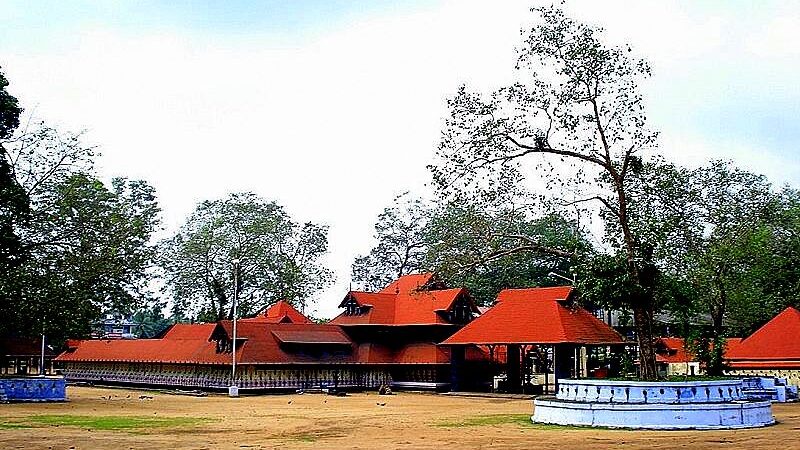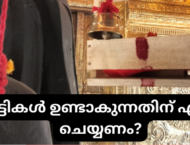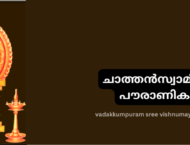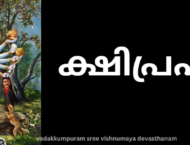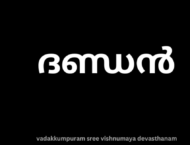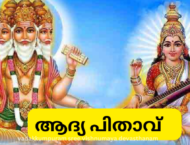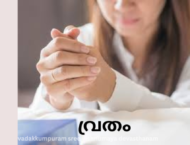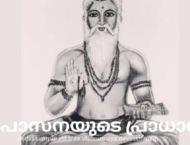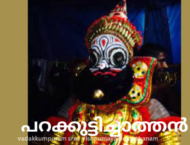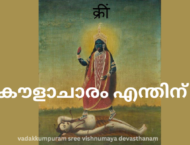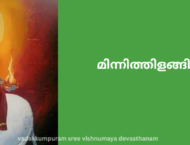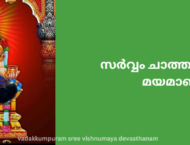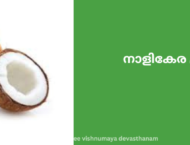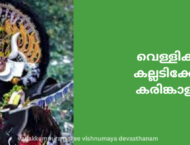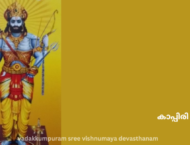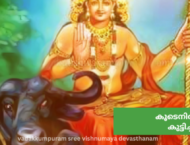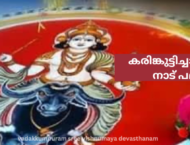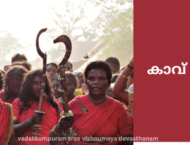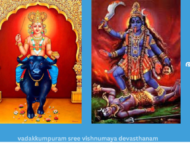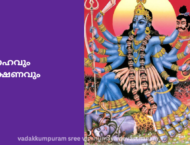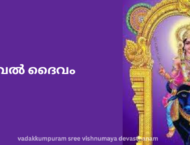Kodungallur Temple!
Sri Kurumba Bhagavathy Temple is a temple located in Kodungallur in Thrissur district of Kerala. It is also known as Kurumbakkavu. The temple was built by Cheran Chenkuttuvan, who ruled Kerala based in Kodungallur. Kannaki was also known as Patinikkadavul (wife god). After the Brahmin domination, today the main deity of the temple is worshiped as Bhadrakali. Kodungallur Kurumba Bhagavathy Temple is considered to be the original temple of 64 Bhadrakali temples in Kerala.
This temple was originally owned by the Dravidians. The deity was the ten-headed god Kurumba. Built during the Sangam period, this temple (not the one we see today) was built by Cheran Chenkuttuvan. Kannaki was described as the Goddess of the Ten. According to Sangam literature, the stone used to carve the idol of Kannaki was brought from the Himalayas after conquering many kings. Its dedication was attended by many kings. Gajabahu I of Ceylon was one of them. The temple is famous for the Kozhikkallu Moodal, Kavutheendal and Theripattu which are held during the Bharani festival.
It is believed that the Kannaki monument erected by Cheran Chenkuttuvan was later transformed into a Kali temple. In the Mahavamsa written by Mahayaman in Pali, A.D. It is believed that Gajabahu ruled over Ceylon in the 2nd century AD and came to Kodungallur 1800 years ago in a boat to attend the celebrations of Goddess Pattini. The idol erected by Cheran Chenkuttavan is said to have belonged to a one-breasted Kannaki. Only smallpox has this shape.
It is said that this is the first temple where Bhadrakali settled in Kerala. It is said that Bhadrakali was settled in the Kodi temple in the book ‘Matrisatbhavam’ and was able to settle down after applying many techniques for this purpose. It is believed that Kunjikuttan Thampuran easily translated the Mahabharata into Malayalam with the blessings of Kodungalluramma.
According to the Puranas, Bhadrakali was born from the eyes of Lord Shiva to save the entire world from the evil Darikasuran. Legend has it that the Kodungallur Bharani was the place where the Goddess became happy and its symbolic rituals and practices. It is believed that the Goddess is pleased with the Panchamakara Pooja of alcohol, meat, fish, genitals and seals.
Sreekurumbamma Temple and Sreekurumbakkam are located about 300 m south of the present Devi Temple, along National Highway 17, facing east and west. Here However, there is another legend that Parshuram performed tapas and appeared here and enshrined the Goddess in the Mahameru Chakra. It is believed that the Goddess was later relocated to the present day temple by Adi Shankara. Trichandana Charthal Pooja is a treatment for the wounds of the Goddess in her battle with the poor. The poojas, which are then performed for seven days, are considered to be the rest and healing of the Goddess.
The total area of the temple complex is 10 acres. The shrine is enclosed in a rectangular enclosure. A special feature of this temple is that there is no flag statue. In front of this temple there are several arayas and perals. Examining the architectural style of the temple, it is seen that great importance has been given to the Shiva temple. The construction of the mandapam is related to the deity of Lord Shiva. Thidappally, Valiya Balikallu, Nalambalam, Anappanthal, Mandapam, Balikalpura, Ganapati Prathishtha and Saptamathriks are all according to the architectural style of the Shiva temple. The mandapam is located opposite the shrine of Lord Shiva. The roof of the Mukhamandapath and the Balikalpura are made of a single plate carved by the Navagrahas, and parts of the Ramayana and the Mahabharata are depicted in the Mannutharam and Chittutharam. You can also see beautiful carvings on the granite pillars. To the east of the shrine is a secret chamber. It is believed that the Mahameru Chakra created by Parasuraraman and the Sri Chakra founded by Sri Sankaracharya are kept in this secret chamber. There is a door on the west side of this room. Inside the sanctum sanctorum, the west-facing entrance is always covered with red silk. The secret chamber is called Sree moolasthanam. The Moolaprathishtha – Kannaki Pratishtha – performed by Cheran Chenkuttuvan has been kept secret. There is a door on the west side of the room. Its face is towards the shrine. Only the sanctum sanctorum has a small entrance and the rest is covered with granite
